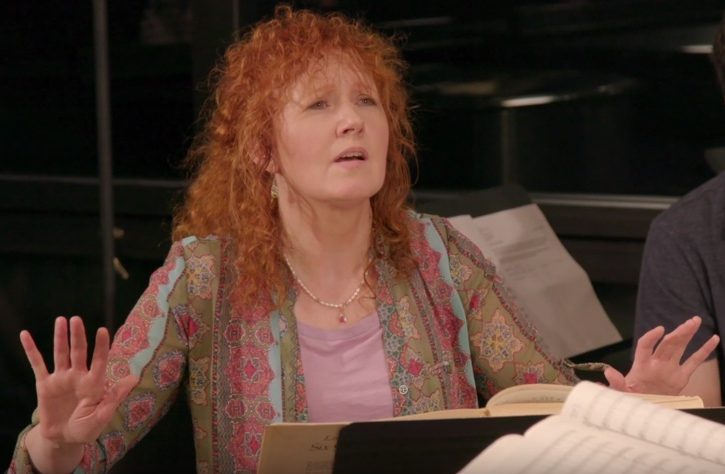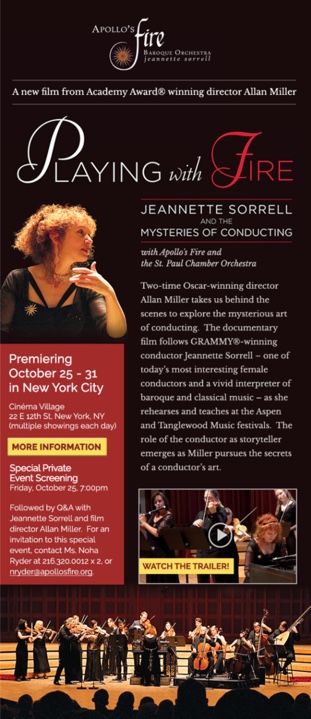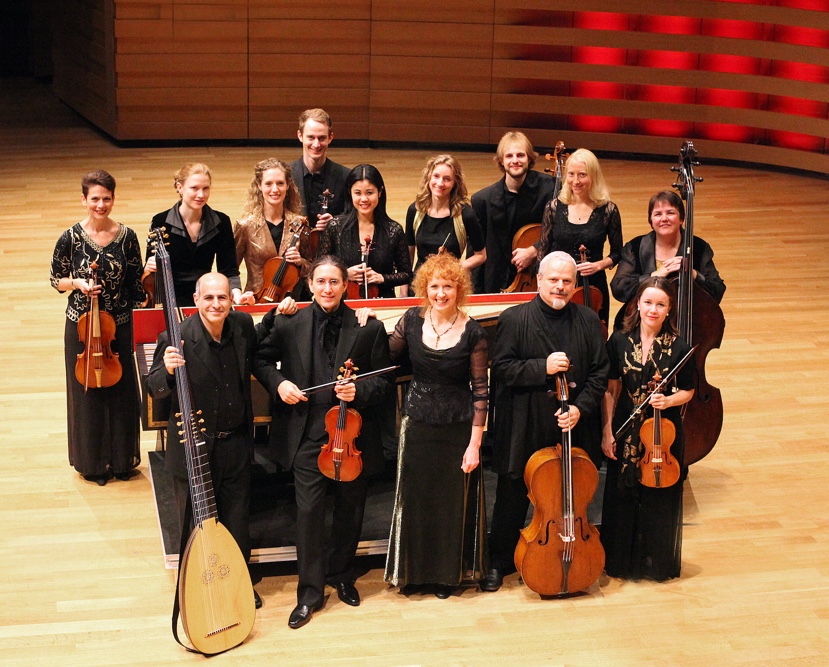
An exciting conductor turns an often rarefied topic into a lively experience in Playing with Fire: Jeannette Sorrell and the Mysteries of Conducting. Premiering Oct. 25 in New York City at Cinema Village, the documentary blends interviews and music into an insightful profile of a knowledgeable and passionate artist.
 Sorrell is the founder, director, and harpsichordist of Apollo’s Fire. The Cleveland-based, internationally acclaimed baroque orchestra recently won a Grammy Award for Songs of Orpheus, an album of Renaissance and early Baroque arias with tenor Karim Sulayman. Their discography of 26 albums includes eight Billboard bestsellers. Sorrell is also a frequent guest conductor around the United States with a reputation for innovative programming.
Sorrell is the founder, director, and harpsichordist of Apollo’s Fire. The Cleveland-based, internationally acclaimed baroque orchestra recently won a Grammy Award for Songs of Orpheus, an album of Renaissance and early Baroque arias with tenor Karim Sulayman. Their discography of 26 albums includes eight Billboard bestsellers. Sorrell is also a frequent guest conductor around the United States with a reputation for innovative programming.
She’s far from the first renowned musician Allan Miller has spotlighted. The producer and director won Academy Awards for From Mao to Mozart: Isaac Stern in China and The Bolero with Zubin Mehta and the Los Angeles Philharmonic. Work with Kurt Masur and Valery Gergiev also figures into a career spanning 45 films.
Miller notes that these conductors “gave me access to their rehearsals and performances, and to much of their life off the podium, but resisted my attempts to probe the source of their genius. It was only when I collaborated with Jeannette Sorrell that I was able to reveal some of the mysteries of the conductor’s art.” Miller demonstrates an eye for big images, such as Sorrell directing the ensemble while striding across the keyboard, as well as subtle exchanges, like her explaining a “whale tone” to a concertmaster.
Conducting emerges as its own narrative within Playing with Fire. While reviewing the score to the Egmont overture, Sorrell pencils in “subtle things that Beethoven didn’t mark.” The work plays in the background, the scene fades into concert footage, then back to her in rapt concentration. When asked how she hears everything in the score at once in her head, she can’t entirely verbalize whether that’s even exactly what is happening. The next scene is of Sorrell rehearsing with just a single violinist and the score. There are no other instruments, but she is clearly hearing everything on the page and beyond. The “mystery” remains but makes so much possible.
Sorrell’s tool kit of harpsichord cues, singing, gestures, and analogies emerges during well-shot rehearsal footage. The story of conducting within the story of this conductor culminates in beautifully edited and vividly recorded concerts. The “burningly clear conception of what every note means and how they relate to each other,” which Sorrell summarizes as part of the conductor’s work, remains an unspoken constant.
Above all, Sorrell catalyzes the stories and emotions behind the music. That’s not a cliché nor an abstract ideas but a crucial part of her process. For Telemann’s Don Quixote overture, she relates the hero’s early-day routine as Apollo’s Fire plays: “Stretching! Coffee! Morning paper! Sad headlines! Back to bed!” It’s an imagined journey as interpretively effective as it is charming. While teaching at the Aspen Music Festival and School, her joy at one student pointing out the sarabande rhythm reflecting the Spanish setting of Egmont speaks volumes.
Sorrell’s own stories illustrate resourcefulness and talent. She wanted piano lessons by age five, but when her parents couldn’t afford an instrument, she practiced on a homemade paper keyboard. The movie begins with a closeup of Sorrell at the podium that ironically segues into her mentioning a Juilliard instructor who told her orchestras wouldn’t accept a female conductor. It wasn’t the only time she heard it. But these frustrating voices are reduced to ridiculous chatter beside her musicianship and sheer presence.

Members of Apollo’s Fire note their leader’s knack for communication, as well as her expertise. A single sustained note in Sorrell’s “favorite measure” of Bach’s Concerto for Two Violins undergoes scrutiny and careful sculpting in her directions to the soloists. Conductor Robert Spano, who first met Sorrell when she was a student at Oberlin Conservatory, recalls her already having a distinct musical personality that made her stand out among classmates. Commentary by instrumentalists, singers, critics, and board members are similarly beaming yet always informative.
Sorrell’s conducting offers both an animated and enlightening visual motif. Every melodic and harmonic curve is expressed in sweeping baton strokes and rocking physicality. She looks moved by the music even as she moves it. The music in turn shows the energy, lyricism, and rhetorical shapeliness she elicits from Apollo’s Fire and as guest conductor with the Saint Paul Chamber Orchestra in music by Mozart, Telemann, Vivaldi, Bach, Beethoven, and Handel.
Upon its Oct. 25 release at Cinema Village, the film will be shown five times daily at the theater through Oct. 31. It is being submitted to film festivals and considered for broadcast, streaming, and physical (DVD/Blu-ray) distribution. Playing with Fire will interest and inspire anyone who loves music or just a well-crafted story about a fascinating person.
Andrew J. Sammut has written about Baroque music and hot jazz for All About Jazz, Boston Classical Review, The Boston Musical Intelligencer, Early Music America’s online and print editions, the IAJRC Journal, and his own blog. He also works as a freelance copyeditor and writer while living in Cambridge, Massachusetts with his wife and dog.

